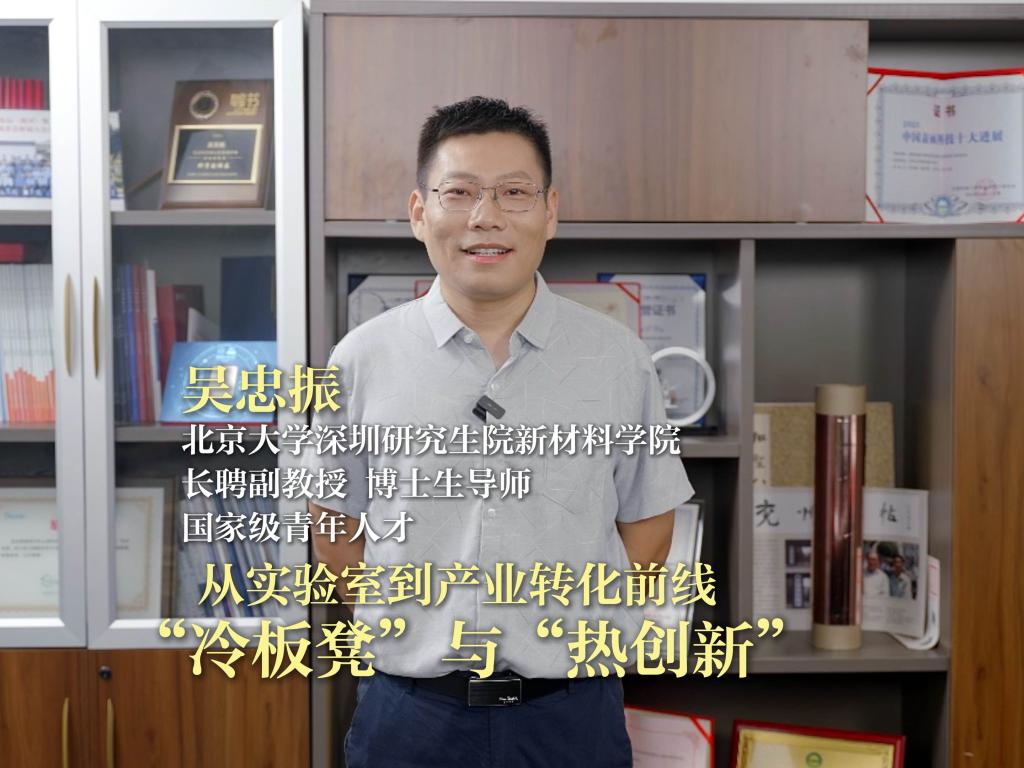Zhongzhen Wu, Tenured Associate Professor at the School of Advanced Materials (SAM), Peking University Shenzhen Graduate School; National Youth Talent; Ph.D. Supervisor.

I. From Harbin Institute of Technology to Peking University: Persistence and Focus
In one sentence, Professor Zhongzhen Wu’s core achievement is that his team was the first—and remains the only one—to apply continuous high-power magnetron sputtering technology to industrial applications. Behind any “only” lies immense challenges.
In fact, since 2008 during his Ph.D. studies, Wu has been deeply engaged with high-power magnetron discharge. Over more than a decade, from Ph.D. candidate to tenured associate professor, he has led his team in developing China's first high-power, large-width roll-to-roll magnetron sputtering equipment with independent intellectual property rights. This project received funding from Shenzhen's major technological breakthrough initiative, was successfully accepted in 2025, and was selected as one of China's Top 10 Advances in Surface Technology. It garnered continuous coverage from Shenzhen Special Zone Daily, Vacuum Technology and Equipment Network, New Energy Industry Network, and Peking University's homepage.
All of the team's research focuses on ion deposition. They have developed a series of high-power discharge simulation models, proposed multiple high-power ion deposition technologies, created thin-film materials with comprehensive performance enhancements, and ultimately achieved industrial applications in high-end ceramic copper-clad substrates, battery composite current collectors, and metal surface composite reinforcements.
II. Layout Based on Industrial Needs: Eyeing the Present While Envisioning the Future
Professor Zhongzhen Wu’s team is structured around three main pillars: simulation and modeling, equipment development, and materials and processes—all serving the core direction of ion deposition. In this process, they continuously explore how to conduct research more effectively and stay ahead of the curve.
Their investment in simulation and modeling is a prime example. The team initially established the simulation unit to reduce equipment R&D costs, as vacuum equipment—especially industrial-scale ones—is enormous and expensive. “You can't build a new set of equipment for every idea,” Professor Wu noted. “Only international giants can afford that kind of development; that's why our nation's industries often get ‘stuck’ on large-scale equipment!”
With simulation systems, computers can replace human experimentation, drastically cutting R&D costs. However, current simulation technologies lack high precision, and large-scale computations are extremely challenging. Thus, the team focuses on improving computational accuracy and multi-scale efficient computing. After nearly a decade of accumulation, Professor Wu confidently states, “In the plasma field, our algorithms and software may not be the absolute best, but they are highly competitive.” Already, several companies have approached the team for simulation assistance.
III. Hone Internal Strengths First, Then Drive Market Adoption
Amid the team’s successes in industry-academia-research transformation, Professor Zhongzhen Wu upholds his core philosophy: “Hone internal strengths first, then drive market adoption.” Translating scientific outcomes is no easy feat; every step from lab to market is forging possibilities amid thorns. Facing these hurdles, the team concentrates on breaking industry bottlenecks and solving real-world problems, carving out their path through time and dedication. In essence: “Proactively address industry concerns with stable technology, controllable costs, and market acceptance.”
“Stick to our strengths—do what others won’t or can’t,” Professor Wu affirms. In a capital-driven industrial transformation model, he believes engineering professors retain unique advantages: a deep grasp of the fundamental laws of scientific and technological progress, coupled with the drive and capability to propel innovations to market. To promote a technology-led industrial incubation model—free from capital's constraints—Professor Wu founded the “Hou Lang Laboratory” (Next Wave Lab).
Through the rigors of complex science and industry, Professor Wu deeply understands the importance of “core competitiveness.” Moving forward, his team will continue focusing on ion deposition, leveraging stronger core strengths to meet increasingly dynamic market demands and press on along this road of innovation.
Note: Professor Zhongzhen Wu is a recipient of funding from the “Shenzhen Graduate School Advanced Materials Industrialization Project,” which supports team industrialization efforts to propel laboratory results into the market.
